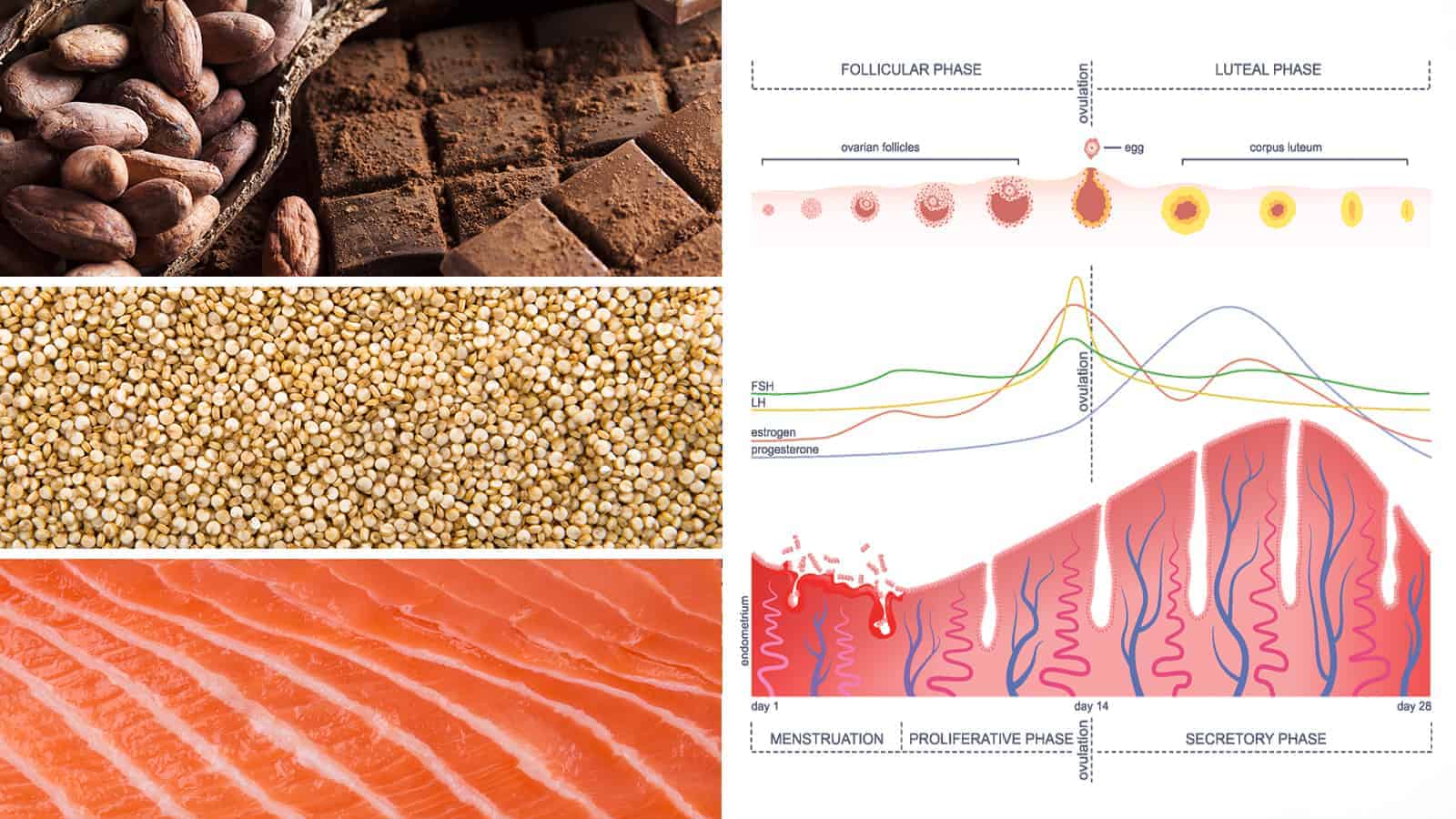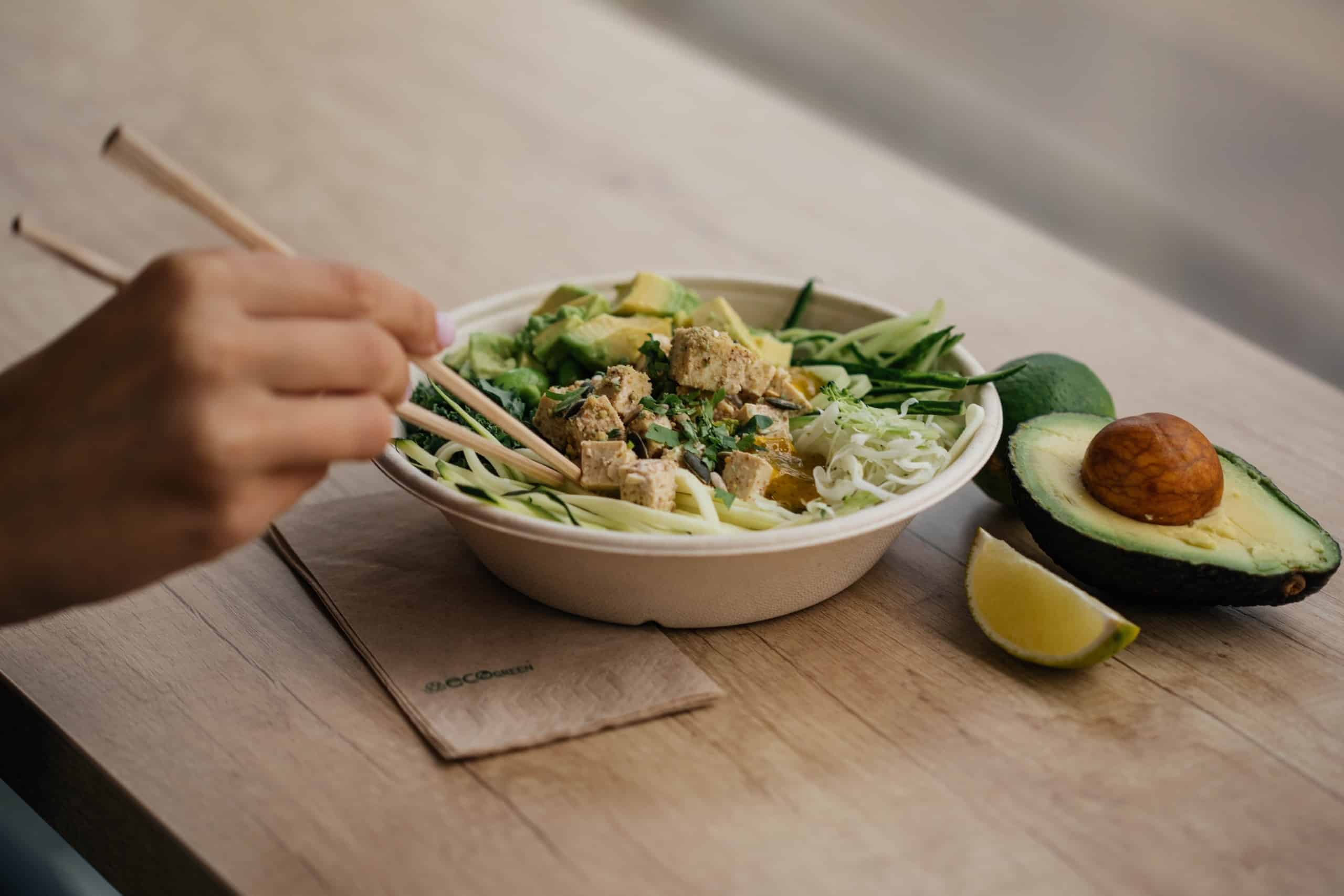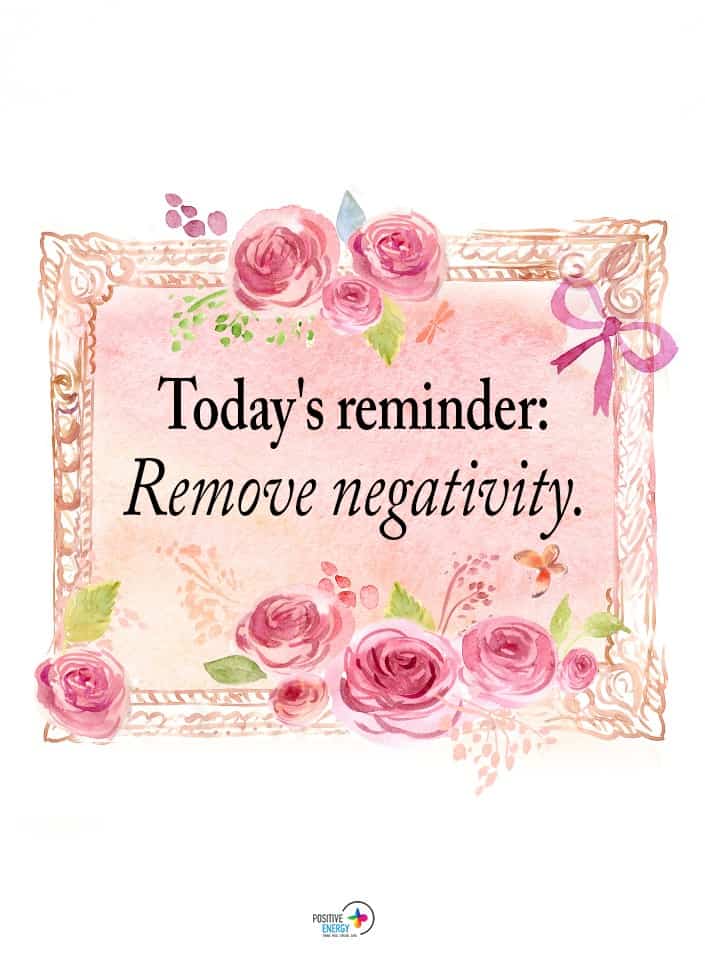The menstrual cycle is rough on women, but certain foods can make it a little easier to get through. Knowing the foods that help is key to feeling better and more energetic during your cycle. Some foods intensify the uncomfortable symptoms, which will only make the experience worse for you.
If you notice that your symptoms interfere with your life, you may need to make a lifestyle change. The symptoms that can be reduced or eliminated with the right foods include:
- headaches
- nausea
- abdominal cramps
- fatigue
- mood swings and irritability
- diarrhea
- constipation
- bloating
Including the right nutrients and vitamins in your diet can ensure your health and safety during your cycle. It will keep your nutrient levels where they need to be, giving you everything you need to keep going. However, the wrong foods will make the issues worse and leave you feeling like you can’t function.
Avoid feeling like you can’t do anything because of your menstrual cycle by changing your diet. You don’t have to change everything at once, but a few positive changes will help. Remember that taking care of your body is the only way to keep moving forward in your life.
The Phases the Female Menstrual Cycle
There are four phases in your menstrual cycle, but the premenstrual phase happens the week before your period. This is when your body knows that the uterine lining must be shed to start the cycle over again. During this phase, women begin to experience symptoms of PMS.The menstrual phase begins when you start your period. It can last anywhere from 2-7 days but usually lasts 3-5 days.
During the menstrual phase, your body sheds the uterine lining. Your hormones decrease, and your body works to mature eggs for ovulation. While the things you eat are always important, being more aware of your eating habits during this step of the cycle is essential.
The menstrual phase causes your body to lose essential vitamins and nutrients. Eating nutritious and anti-inflammatory foods can help replenish your body and help you feel better.
Fifteen Foods That Help Women’s Menstrual Cycle
1. Water
Drinking enough water is essential for helping you during your period. It decreases your risk of getting headaches or becoming dehydrated, something that is common during menstruation. Drinking enough water can also prevent you from bloating and retaining water.
2. Chicken
Iron and protein are essential for overall health, especially during a woman’s period. Not only do you need to replenish, but it helps you feel full longer, reducing your cravings. You will also have more energy and not feel quite as lousy as you would otherwise.
3. Lentils and Beans
Lentils and beans are both full of protein and iron, helping keep your levels where they need to be. Regulating your iron will prevent you from feeling weak during your menstrual cycle.
4. Fruit
The water in fruit helps you stay hydrated, and the sweetness helps curb sugar cravings. You won’t eat as many refined sugars, helping you feel good all day. Fruit is the perfect snack to help a woman’s menstrual cycle because women crave sweets at that time.
5. Dark Chocolate
Dark chocolate contains magnesium and iron, both of which need to be replaced during a women’s period. It helps reduce the severity of your symptoms, including mood swings, headache, irritability, food cravings, and poor concentration.
6. Tea
Both peppermint tea and kombucha tea can help a woman’s menstrual cycle. Peppermint tea helps soothe symptoms such as cramps, nausea, and diarrhea.
Kombucha tea is rich in probiotics, helping to fight yeast. Be careful not to drink too much sugar in this tea, though.
7. Vegetables
Leafy green vegetables can help you replenish your iron levels, which dip low during your period. Spinach and kale are examples of vegetables that can boost your iron and magnesium, helping to decrease your symptoms. These vegetables help with fatigue, body pain, and dizziness.
8. Nuts
Nuts are a good source of protein since they are full of omega-3 fatty acids. They contain other vitamins and nutrients, too, including magnesium. You can experience the benefits of nuts in nut butter or nut milk in addition to eating them whole.
9. Quinoa
Rich in iron, protein, magnesium, and other nutrients, quinoa is a beneficial addition to your diet. It has a low glycemic index, meaning it will help you feel full and energetic. Plus, it won’t cause you to crash later from too much sugar.
10. Ginger
Ginger has anti-inflammatory effects, which can ease tense or achy muscles. It also prevents nausea, which sometimes affects a woman during her cycle. You can use ginger in your meals, or you can take it in tea.
11. Flaxseed Oil
Flaxseed oil is full of omega-3 fatty acids, helping reducing menstruation symptoms. It can ease constipation, bloating, and cramping, which is sure to make you feel better.
12. Yogurt
Yeast infections are common in women during or just after their period. Increasing the number of probiotics that you consume can help prevent those infections.
Probiotics are found in yogurt and are good bacteria that help you fight infections. Yogurt also contains magnesium, calcium, and other essential vitamins and nutrients.
13. Fish
Fish is a nutritious way to increase your iron, protein, and omega-3 fatty acids. It will replenish your depleting levels and reduce the pain of period cramps. Not only will you naturally feel better, but you can also limit the number of pain killers you might usually use.
Omega-3 fatty acids can also help reduce depression, which commonly occurs during the menstrual cycle. They help reduce mood swings, as well, helping increase your overall well-being.
14. Tofu
Tofu is made from soybeans, so it is rich in iron, magnesium, and calcium. If you are a vegetarian or simply need a boost of these nutrients, tofu can help your cycle.
15. Turmeric
This spice has anti-inflammatory properties, helping reduce the symptoms of menstruation. Your symptoms will be less severe, as well. The decreased severity is due to curcumin being the main ingredient of turmeric.
Seven Foods You Should Avoid
There are foods you can eat to help your menstrual cycle, and there are also foods you should avoid. Everything is alright in moderation, but certain foods can make your symptoms worse.
1. Sugar
Sugar can cause your energy to spike and then crash later. Experiencing an energy crash can put you in a bad mood and make you feel depressed or anxious. Limit your sugar intake and look for natural sweeteners instead.
2. Coffee
Caffeine causes water retention and bloating. It can also make headaches worse and cause digestive issues like diarrhea or constipation.
3. Red Meat
The body produces prostaglandins during your period, causing your uterus to contract. This process gets rid of the uterine lining, which is what causes your menstrual flow. When your prostaglandin levels are high, your cramps will be worse.
Red meat contains high amounts of prostaglandins. The high prostaglandin level means that red meat will make your cramps worse, so you should avoid it during menstruation.
4. Salt
Too much salt causes water retention and bloating, both of which are an issue during menstruation. Avoid adding salt to your food, and limit the number of processed foods that you eat. Most process food contains lots of salt, which will leave you feeling uncomfortable.
5. Spicy Foods
It is common for spicy foods to cause an upset stomach, diarrhea, stomach pain and cramps, and nausea. During your cycle, you will want to limit spicy foods because they will intensify your symptoms. Unless you are used to eating them regularly, it is best to avoid them entirely during this time.
6. Alcohol
Alcohol causes quite a few detrimental effects, all of which intensify the symptoms of your cycle. It will dehydrate you and, in turn, causes worsening headaches and bloating. Alcohol can also cause digestive issues like diarrhea and nausea, which intensify during your cycle.
Drinking alcohol doesn’t only affect you at that time, either. If you have a hangover the next day, it can lead to more headaches, nausea, diarrhea, and fatigue. You are already dealing with enough of those things on your cycle, so adding to them is not a good idea.
7. Any Other Foods Your Body Doesn’t Tolerate Well
Food sensitivities intensify during your monthly cycle. You will notice more nausea, constipation, or diarrhea, depending on what your symptoms usually are. If you tend to avoid food when you aren’t on your period, be even more strict when you are.
Final Thoughts on Foods That Help Women’s Menstrual Cycles
Your menstrual cycle isn’t a fun experience, so try to make it as positive as possible. Nourish your body so that you can feel your best even as you have your period. Focus on foods full of nutrients and vitamins, and avoid processed or high-sodium foods.
Once you find some new, healthy foods you like, you can begin developing healthy habits to help your cycle. Ensure you are consuming enough iron and magnesium to keep your energy levels up, too. Your health should be a priority, so do what is best for your body during your menstrual cycle.

















 Community
Community

